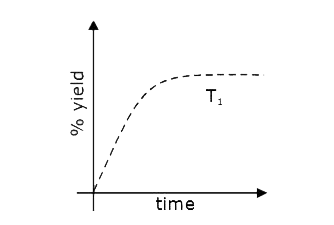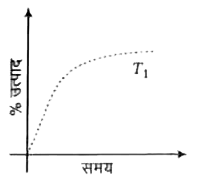The principle goal of chemical synthesis is to maximize the conversion of reactants into products. Le-Chatlier's principle can be applied to achieve this goal.
Preidct the conditions to be applied to maximize the production of ammonia in the following reaction:
N2(g)+3H2(g)⇔2NH3(g)ΔH=−92.38kjmol−1Solution in Malayalam
Step by step video & image solution for The principle goal of chemical synthesis is to maximize the conversion of reactants into products. Le-Chatlier's principle can be applied to achieve this goal. Preidct the conditions to be applied to maximize the production of ammonia in the following reaction: N_(2(g))+3H_(2(g))iff2NH_(3(g)) DeltaH=-92.38kj mol^-1 by Chemistry experts to help you in doubts & scoring excellent marks in Class 11 exams.
Updated on:21/07/2023Topper's Solved these Questions
Similar Questions
Define environmental chemistry.
View SolutionWhich of the following compunds exhibit gemetrical isomerism? Draw their cis-trans isomers (i) CH3−CH=CCl2(ii) CH3−CH=CHCl(iii)ClCH=CHCl(IV)CH3−CH2−CH=CH2
View SolutionFor the reaction N_(2)(g)+3H_(2)(g)to2NH_(3)(g) , which of the following is correct regarding DeltaH ?
View SolutionOn the basis of Le Chatelier principle explain how temperature and pressure can be adjusted to increase the yield of ammonia int he following reaction. N_2(g)+3H_2(g)hArr2NH_3(g), DeltaH=-92.38KJ Mol^(-1) What will be the effect of addition of argon to the avove mixture at cosntant volume ?
View SolutionThe enthalpy of formation of ammonia is -46.0 KJ mol^(-1) . The enthalpy change for the reaction 2NH_(3)(g)rarr N_(2)(g)+3H_(2)(g) is :
View SolutionFor the reaction N_(2)+3H_(2)iff2NH_(3),DeltaH=?
View SolutionThe % yield of ammonia as a function of time in the reaction N2(g)+3H2(g)⇔2NH3(g),(g)ΔH<0 at (P,T1) is given below

View SolutionFor the reaction, N_(2)(g)+3H_(2)(g)rarr2NH_(3)(g) express the rate of the reaction with respect to the reactants and the product formed.
View Solutionअभिक्रिया, N2(g)+3H2(g)↔2NH3(g), ΔH<0 में अमोनिया के प्रतिशतता उत्पाद (% yield) की समय (time) पर निर्भरता (p,T1) पर नीचे दर्शाई गई है
यदि यह अभिक्रिया (p,T2) पर की जाए, जहाँ T2>T1, अमोनिया के % उत्पाद की समय पर निर्भरता प्रदर्शित करता है

View SolutionFor the reaction N2+3H2⇔2NH3,ΔH is
View SolutionIn the manufacture of ammonia as
3H2(g)+N2(g)⇔2NH3(g),ΔH=-93.8 kJ
Work out the conditions for maximum yield of ammonia (Apply Le-Chatelier's principle).
View SolutionEnthalpy of formation of ammonia is −46.0kJmol−1.The enthalpy change for the reaction:
2NH3(g)→N2(g)+3H2(g)
View SolutionThe reaction quotient (Q) for the reaction
N2(g)+3H2(g)⇔2NH3(g)
is given by Q=[NH3]2[N2][H2]3
The reaction will proceed from right to left if
View Solutionअभिक्रिया N2(g)+3H2(g)<⇒2NH3(g) में ΔH=−93.6kJ है, अमोनिया की लब्धि (yield) नहीं बढ़ेगी, यदि
View SolutionWhich temperature and pressure will be to obtain more products in the following reaction ? Explain by Le-Chatelier principle.
(i)N2(g)+3H2(g)⇔2NH3(g),ΔH=−93.8kJ mol−1
(ii)H2(g)+CO2(g)⇔CO(g)+H2O(g),ΔH=+41kJ mol−1
(iii)N2(g)+O2(g)⇔2NO(g),ΔH=175 kJ
(iv)CO(g)+2H2(g)⇔CH3OH(g),ΔH=−92.0kJ mol−1
View Solution
